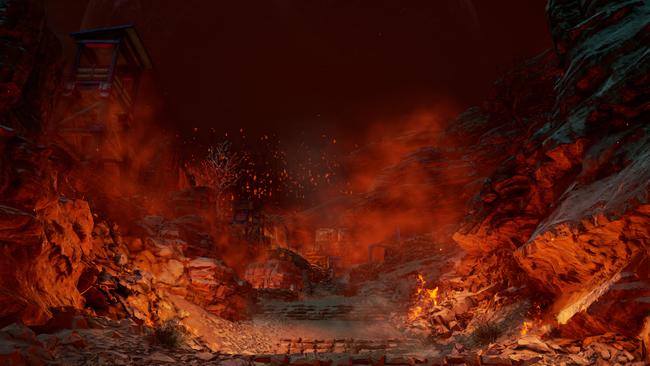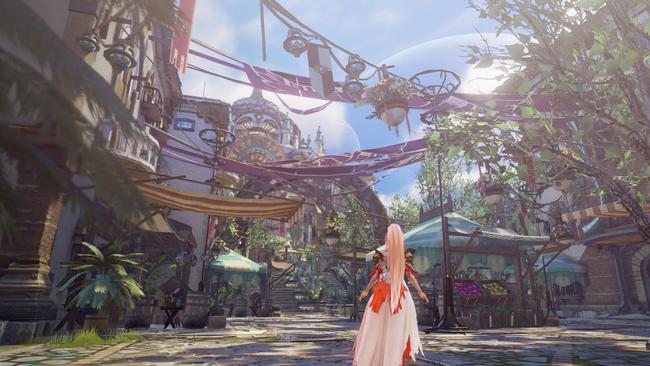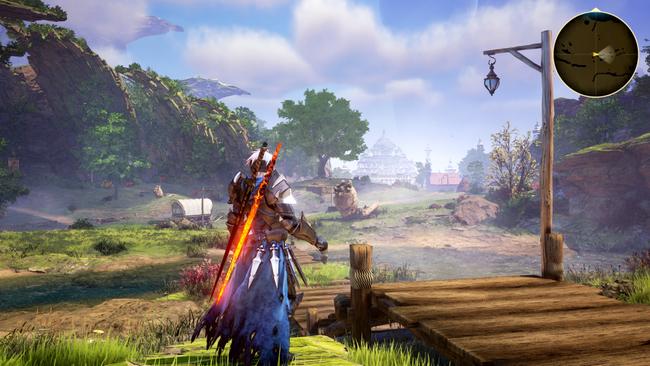
Tales of Arise excels at much, but I've still got concerns - hands-on impressions
We are a month out now from Bandai Namco’s hotly-anticipated latest entry of the Tales franchise, Tales of Arise, and I had the privilege of checking out a near-finished build of the game’s first chapter. As a long-time fan of the series, I went in excited for Arise and came out of my experience with even greater enthusiasm to get my hands on the finished product, though with a couple of mixed feelings thrown in.
I will be avoiding most of the story beats that take place in the first chapter and sticking with only what has been previously featured in early trailers. Tales of Arise centers around two main protagonists: Alphen, a Dahnan slave who can feel no pain, and Shionne, a Renan whose mere touch causes nothing but pain. Together, this unlikely pair will strive to unravel mysteries and free the enslaved people of Dahna who have been ruled over by those of Rena - invaders who have ruled for three centuries.

The moment you start up the game, players will notice how much the visuals have improved over past titles.. I was taken in by the refined details and effects present in the maps that I got to explore. There were more than a few times that I found myself simply rotating the camera and admiring the visuals, watching sparks dance in the sky or the foreboding fiery fortress in the distance. I wouldn’t say previous Tales entries ever looked outright poor, since the anime aesthetic is Bandai Namco’s bread-and-butter, but Tales of Arise really kicks it out of the park.
One aspect of the experience I wasn’t expecting to be as blown away by was the in-game user interface. The moment you open the main menu, you are greeted by large paintings of the characters in your party dressed in the outfit you have them in. I honestly couldn’t tell if these were 3D models simply made to look like actual painted images of the characters. Regardless, they look amazing, and seeing what the rest of the characters’ menu art looks like is one of my most exciting aspects to check out in the final version.

Some of my excitement did diminish, if ever so slightly, when it came to the combat. Tales of Arise’s combat is still very frantic and fast-paced, as the series is known for, but I worry that some depth has been removed in this new title. Combat closely resembles its most recent predecessor, using the Soul Gauge diamonds from Tales of Berseria, with specific artes tied to three of your controller’s face buttons. Where Arise separates itself, however, is that it adds a dedicated “jump” button and removes the artes strings from Berseria that would allow you to set up attack trees that will enable different attacks to come out depending on what buttons you press at other points of the combo.
Tales of Arise’s instead gives you three artes spots that you use on the ground and three artes for the in the air after jumping. As I only played a small portion of the whole game, I can’t speak to how it may evolve as you go forward, but early on, at least, the combat seems to be lacking much depth when it comes to comboing abilities or having artes flow in sequence. I’m definitely curious to see how this may change as your progress further in the game, with new party members and a growing pool of abilities. One bright spot is that I did get confirmation from the developers that you would gain the ability to set artes shortcuts for you and your party, a feature that was missing in the demo.
In an interesting twist, perhaps the biggest mechanical change in battle is that healing artes now pull from a separate shared party resource entirely, known as “Cure Points” or CP. Any healing abilities you use in combat, regardless of the character, will be pulled from this pool, and will also be used when reviving your characters if you lose a battle. You will be revived with your characters gaining back an amount of health based on the CP used if you have any. will also be used to interact with environmental objects found around the map. All of this makes balancing your healing and this new resource paramount when tackling large-scale fights or making sure you restore it by cooking food or using the series’ staple Orange Gels.

The combat interface has also seen a dramatic redesign compared to its predecessors, resulting in a far more minimalistic display. Gone are the character portraits from the bottom of the screen with their information, replaced with small health bars to off to the side. I can’t say I was a fan of this change as I found it challenging to keep track of my partners health, especially during the flashier fights. I appreciate the attempt to clear up the screen so that the action is more center stage, but from an accessibility and clarity standpoint, it’s more of a downgrade in my eyes.
As a long-time fan of the Tales series, I’d love to see the games sell as well and get all the recognition that they deserve because it will only mean we will continue to see these beautiful games long into the future. Tales of Arise remains my most anticipated title of 2021, and the demo only cemented the fact that September 10 won’t be here fast enough.
